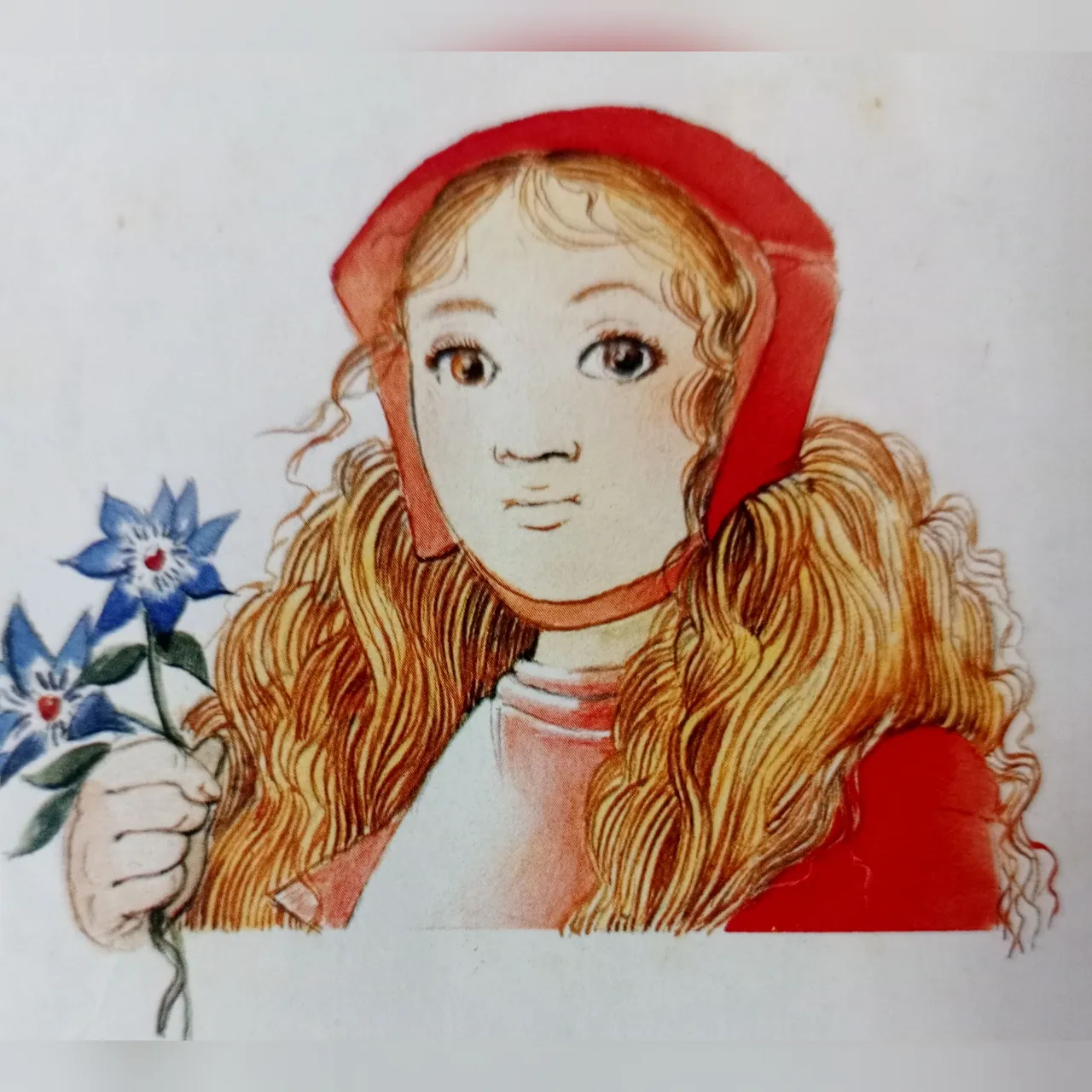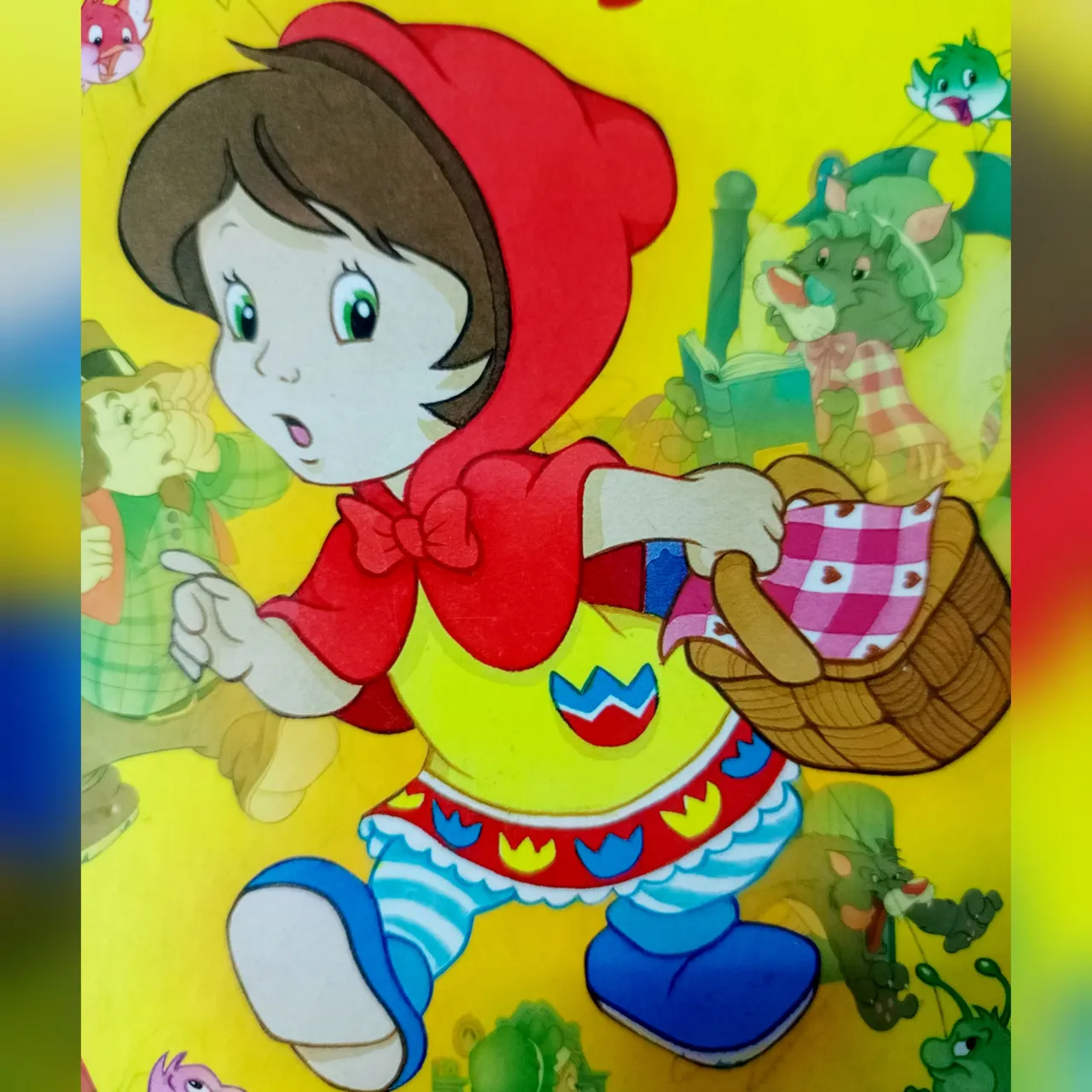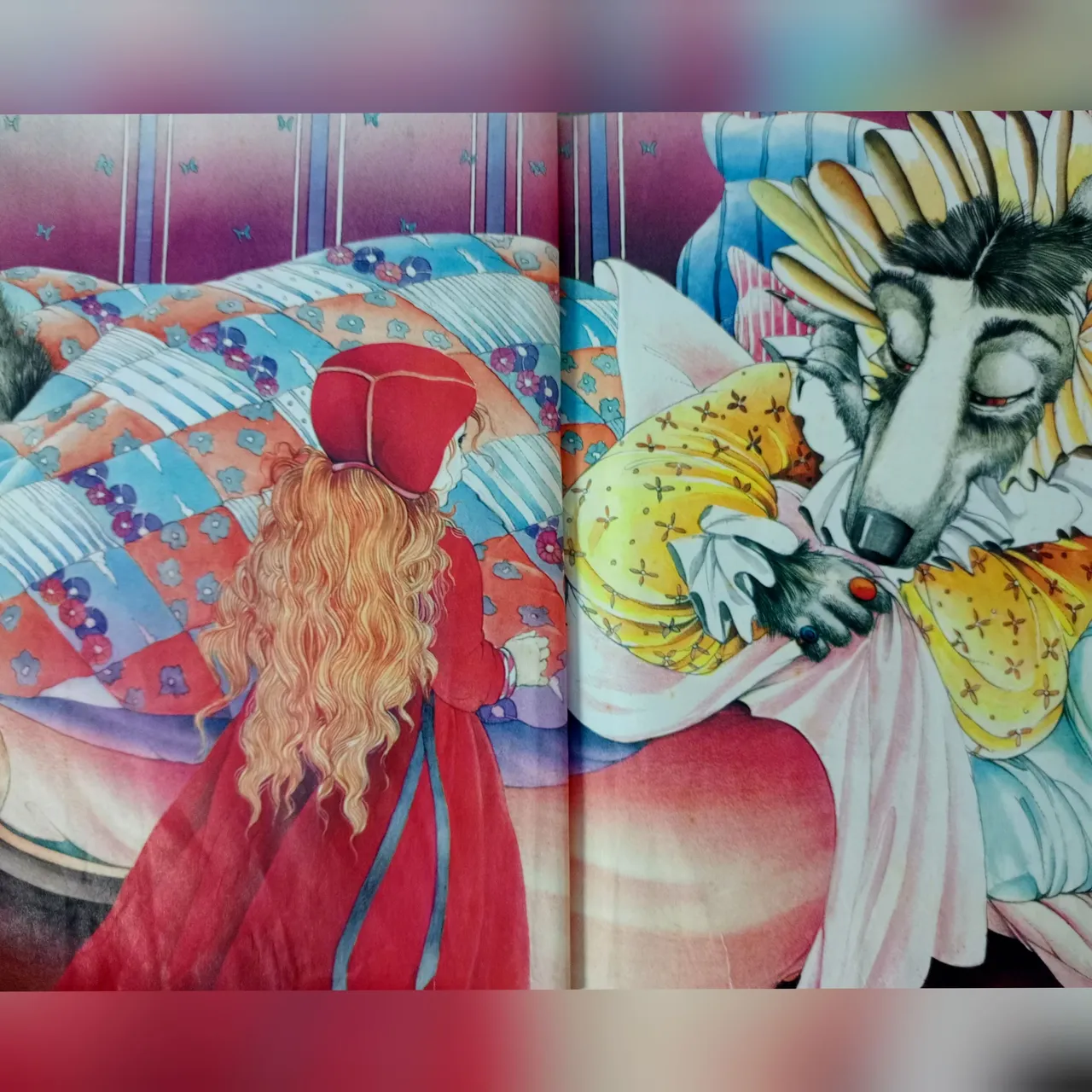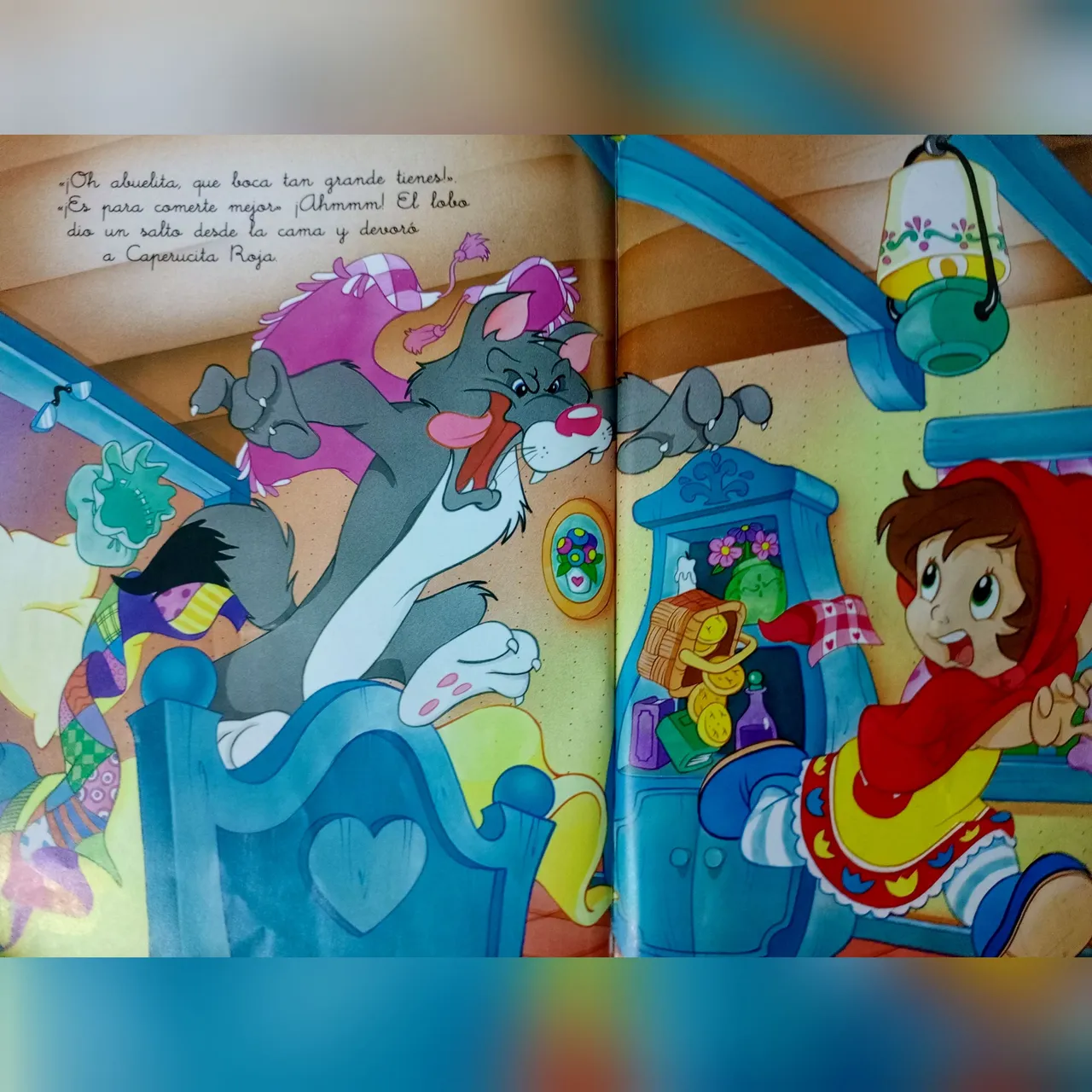A couple of days ago I examined the story Red Riding Hood by the Brothers Grimm, an edition I acquired at the Book Fair, whose binding is thick cover and the illustrations correspond to simple cartoons, but the text was in cursive calligraphy, which made it difficult for the little ones to read. Now, I have two versions of the same story, since in my children's classics book there is a large-print edition with more elaborate drawings.


The first notable difference I have noticed is that the first Little Red Riding Hood looks like a girl of 7 or 8 years old, while the other one could be 12 years old, precisely the age when young girls in the 19th century were beginning to be prepared to face the role of wife and mother.

In the first story there is a latent warning: there are many dangers in the forest! When she meets the wolf, the humanized animal proposes a race to the grandmother's house. In the second story, on the other hand, the wolf wanted to devour her right there, but did not dare because there were woodcutters nearby. Even in her innocence, she did not think it was dangerous to talk to the wolf.

In both stories the wolf arrives earlier at the grandmother's house, however, in the version for older children a warning is presented, Little Red Riding Hood notices that the grandmother has a deep voice, recognizes that something is not right, but trusts, dismisses her intuition, and goes ahead. On the other hand, in the toddler version there is no such warning of danger, Little Red Riding Hood enters the house and heads straight for Grandma's room.
At the climax of the story, the two versions also go different ways. In the version for young children, the wolf eats Little Red Riding Hood, but later a hunter opens the animal's stomach, extracts the girl and the grandmother, then sews him up and proceeds to tie him to a tree, remaining alive, watching the rest of the characters taste what was in the basket.

In contrast, in the other version, the wolf cannot eat Little Red Riding Hood because a woodcutter, attentive to her screams, kills him by chopping off his head with an axe before he can cause any harm to the girl. Beheading with an axe was the capital punishment for criminals in the 19th century, in this case, the wolf had already killed the grandmother and therefore his death was justified.

It should be noted that the original version of Little Red Riding Hood, published by Charles Perrault in 1697, does not have a happy ending because the wolf achieved his goals and his crimes went unpunished, which is why the Brothers Grimm dared to modify it to create a more child-friendly story.
Versión en Español
Hace un par de días examiné el cuento Caperucita Roja de los hermanos Grimm, una edición que adquirí en la Feria del Libro, cuya encuadernación es de tapa gruesa y las ilustraciones corresponden a dibujos animados sencillos, pero el texto estaba en caligrafía cursiva, lo que dificultaba la lectura para los pequeños. Ahora, tengo dos versiones de un mismo relato puesto que en mi libro de clásicos infantiles está una edición de letras grandes y cuyos dibujos lucen más elaborados.


La primera diferencia notable que he percibido es que la primera Caperucita luce como una niña de 7 u ocho años, mientras que la otra podría estar en los 12 años, justamente la edad cuando las jóvenes en el siglo XlX comenzaban a ser preparadas para afrontar el papel de esposa y madre.

En el primer cuento hay una advertencia latente: ¡hay muchos peligros en el bosque!, al encontrarse con el lobo, el animal humanizado le propone una carrera a la casa de la abuela. En cambio, en el segundo, el lobo la quería devorar allí mismo, pero no se atrevió porque había unos leñadores cerca. Incluso, desde su inocencia, no pensó que era peligroso hablar con el lobo.

En ambos relatos el lobo llega antes a la casa de la abuela, sin embargo, en la versión para niños grandes se presenta una advertencia, Caperucita nota que la abuela tiene una voz grave, reconoce que algo no está bien, pero se confía, descarta a su intuición, y sigue adelante. Por otra parte, en la versión para niños pequeños no se distingue esa alerta de peligro, Caperucita entra en la casa y se dirige directamente hacia la habitación de la abuela.
En el momento cumbre del cuento, ambas versiones también van por caminos diferentes. En la versión para niños pequeños, el lobo se come a Caperucita, pero posteriormente un cazador le abre el estómago al animal, extrae a la niña y a la abuela, luego lo cose y procede a amarrarlo a un árbol, permaneciendo vivo, observando al resto de los personajes degustar lo que había en la cesta.

En contraste, en la otra versión, el lobo no puede comerse a Caperucita porque un leñador, atento a los gritos, lo asesina cortándole la cabeza con un hacha antes de que pueda causarle algún daño a la niña. La decapitación con hacha era la pena capital para los criminales en el siglo XIX, en este caso, el lobo ya había matado a la abuela y por lo tanto se justificaba su deceso.

Es de hacer notar que en la versión original de Caperucita Roja, publicada por Charles Perrault en 1697, no se advierte un final feliz porque el lobo logró sus objetivos y sus crímenes quedaron impunes, de allí que los Hermanos Grimm se atrevieran a modificarlo para originar un relato más amigable para los niños.
✓Photos from my personal gallery, edited with Fotocollage.
✓Text translated with DeepL.
✓Fotos de mi galería personal, editadas con Fotocollage.
✓Texto traducido con DeepL.